Content focus: Science
Standard: Life Science – Basic Needs of Living Things – Living things survive only in environments that meet their needs.
Theme: How pollution prevents living things from getting their needs from the environment.
Pre-assessment
To pre-assess my students, I gave each of them two post it notes and asked them to write their first name on each. Then, I had the students come over to the carpet with their post it notes. I showed them a chart with two pictures and asked them to put their first post it note under the picture that they thought was showing the needs of living things. I then showed them another chart with two pictures and asked them to stick their other post it note under the picture that showed pollution. Based on my pre-assessment, 8/14 students were able to correctly identify pollution and 12/14 were able to correctly identify living things’ needs. These results showed that most of the students already knew what living things need to survive, but were not sure what pollution was and how it effected them. So, they needed more background information about pollution, but they were ready to do more higher order thinking and hands on activities about living things' needs.
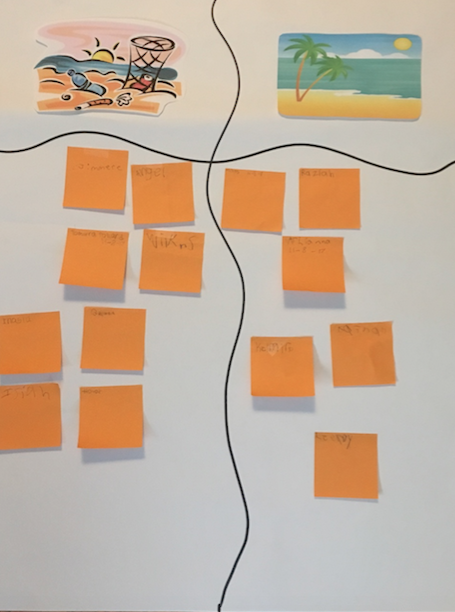
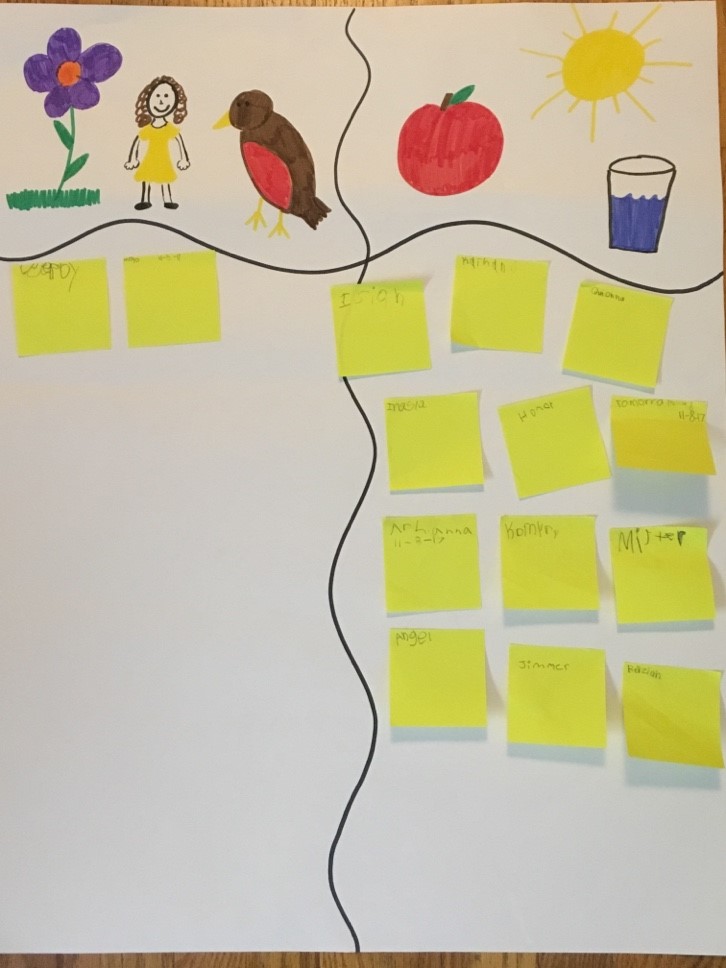
Formative Scoring Guides
- During the first lesson, the students read books about ocean pollution to provide some background knowledge. After that the students each had two jars to observe at their table. Each jar was filled with water and a small plastic ocean animal. One of the jars also had trash and dirt in it. The students were given a worksheet on which they colored in two jars to look like the jars on their table. They also had to write a sentence at the bottom about which water was better for ocean animals to live in and why. Child 1 from my observations correctly identified needs of living things but not pollution. Child 2 correctly identified both needs of living things and pollution.
Worksheet:
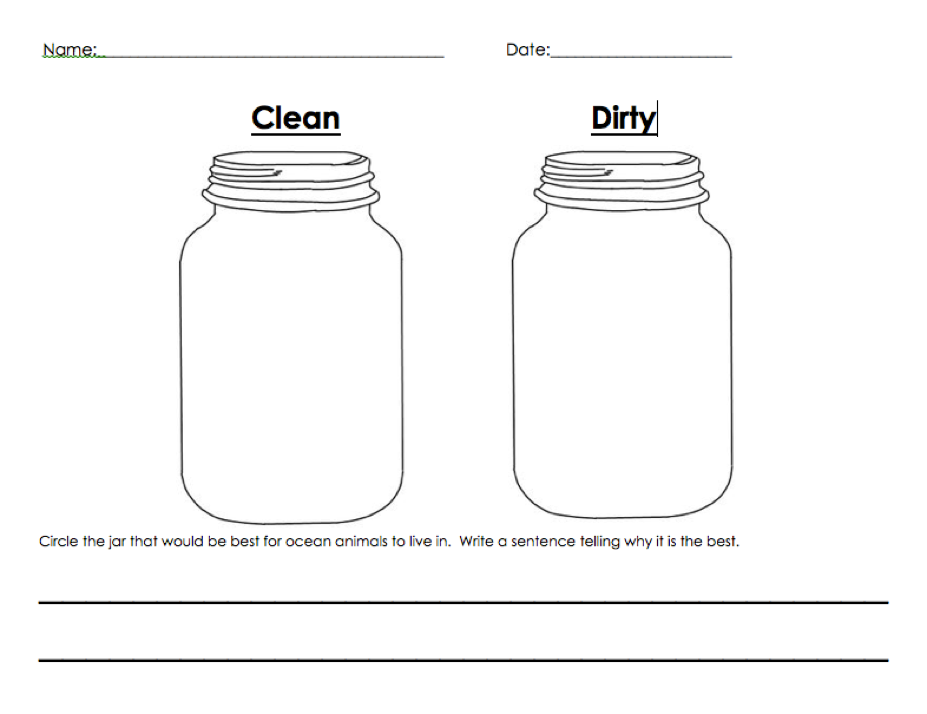
Scoring Guide (rating scale):
The first one was used for the advanced or on level students. The second rating scale was used for struggling readers and writers, like child 2 in my observations.
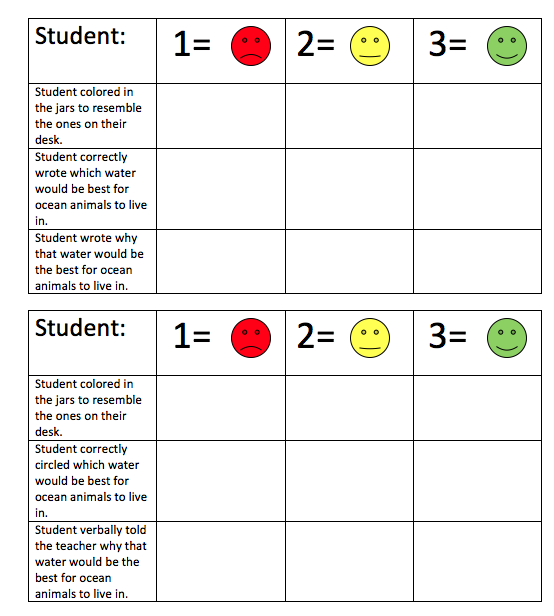
2. During the second lesson, the students read more books about what pollution is and how it stops living things from getting their needs from the environment. Afterwards, the students completed a cut and sort to identify if living things in photographs were able tp get their needs from the environment or not. It was a simple way for them to use higher order thinking and apply what they learned from the books on on day one and two when looking at pictures of living things.
Cut & Sort:
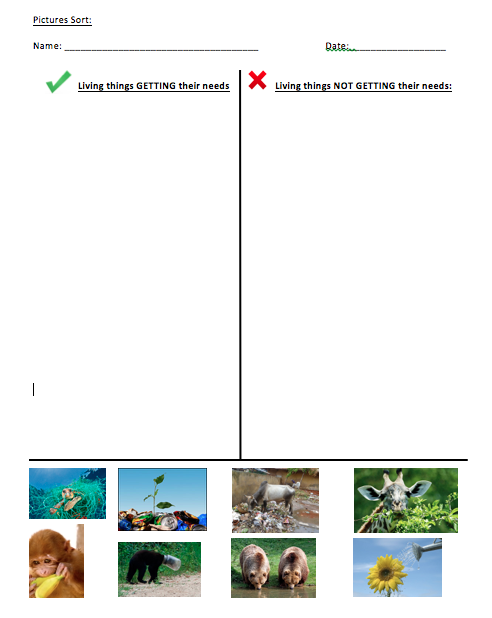
Scoring Guide (checklist):
I only used one scoring guide for this assessment because it did not require any writing or reading, which is the main struggle of most of my students.
|
Student: |
Glued in correct column |
Glued in incorrect column |
|
Turtle in net |
|
|
|
Monkey eating banana |
|
|
|
Plant in trash |
|
|
|
Giraffe eating leaves |
|
|
|
Bear stuck in bucket |
|
|
|
Bears drinking water |
|
|
|
Cow eating trash |
|
|
|
Flower getting watered |
|
|
3. During my third lesson, the students watched a few youtube videos about pollution around the world on their iPads. Afterwards, they came to the carpet and made an anchor chart about the different types of pollution and how exactly it stops living things from getting their needs from the environment. The students then used their plicker cards to answer questions about pollution and needs of living things. The questions were "Does pollution help living things get their needs or stop them from getting their needs?" "Is there more than one type of pollution?" "Which of the following is NOT a need of living things?". Each of the questions had 2-4 multiple choice options. The struggling readers had color coded plickers cards to help them identify which letter went with each answer.
√ =the student answered correctly
X =the student did not answer correctly
|
|
Question #1 |
Question #2 |
Question #3 |
|
Angel |
|
|
|
|
Arhianna |
|
|
|
|
Honor |
|
|
|
|
Inasia |
|
|
|
|
Isiah |
|
|
|
|
Jimmere |
|
|
|
|
Kainan |
|
|
|
|
Ka’myra |
|
|
|
|
LeeRoy |
|
|
|
|
Maya |
|
|
|
|
Mister |
|
|
|
|
Quionna |
|
|
|
|
Ra’ziah |
|
|
|
|
Tomorra |
|
|
|
Summative Assessment
During the last science lesson in this unit, the students will begin by reviewing what they have learned the past three days. I will explain to the students how to act like scientists. The students will go back to their desks and they will each have a small container filled with water, a plastic ocean animal, and trash/pollution. The students will also have small spoons, plastic tweezers, and small strainers at their desks. The students will use these tools to try and clean out their miniature ocean. After the students clean out their ocean, the students will come up and show their cleaned mini ocean to the rest of the class. They will each have a turn to explain to the class which tools they used, how they cleaned it out, and how it effects the living thing in their ocean.
Scoring Guide (Rubric):
|
|
CATEGORY |
4 |
3 |
2 |
1 |
|
Vocabulary |
Uses all of the vocabulary learned in this unit. |
Uses some of the vocabulary learned in this unit. |
Uses one vocabulary word learned in this unit. |
Uses none of the vocabulary learned in this unit. |
|
Stays on Topic |
Stays on topic all of the time. |
Stays on topic most of the time. |
Stays on topic some of the time. |
It was hard to tell what the topic was. |
|
Comprehension |
Student is able to accurately answer all questions from the teacher about the topic. |
Student is able to accurately answer most questions from the teacher about the topic. |
Student is able to accurately answer a couple questions from the teacher about the topic. |
Student is not able to accurately answer any questions from the teacher about the topic. |